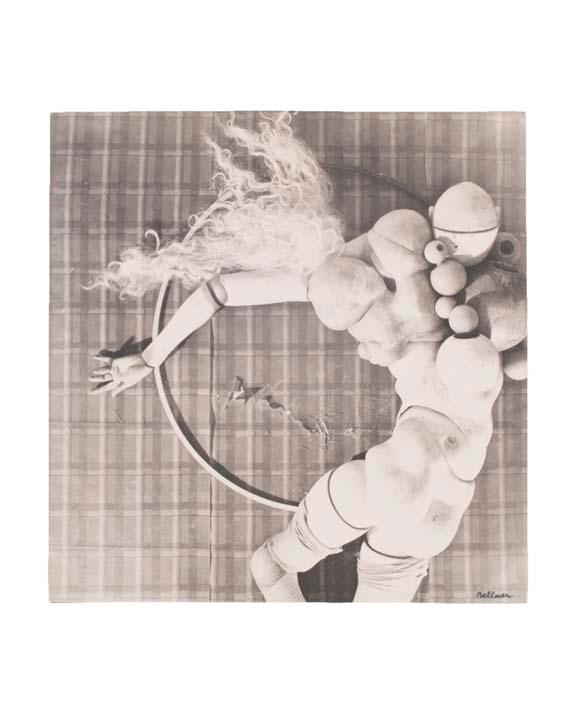
La Poupée
Artist: Hans Bellmer (German, 1902-1975)
Date: 1935-1940
Dimensions:
12 1/2 x 11 3/4 in. (30.7 x 29.7 cm)
Medium: Gelatin-silver print
Classification: Photographs
Credit Line: Purchased with funds from the Libbey Endowment, Gift of Edward Drummond Libbey
Object number: 1982.209
Label Text:Hans Bellmer, Les marionettes (Marionettes). Text by Heinrich von Kleist (1969)
Kleist’s book pivots around the story of the Fall of Man in the book of Genesis. Kleist believed that man’s concept of time had led him to falsely think of the Fall as an event in the distant past. In fact, according to Kleist, it is ongoing. The biblical story is a mythical presentation of a constantly changing self-awareness, which prevents humans from reaching perfection.
Les marionettes follows a dancer’s attempt to explore the mystery of artistic creation through analysis of a puppet theater. In the book we see a conflict between emotional commitment (religious beliefs) and intellectual inquiry (study of knowledge and self-awareness). This theme interested the artist Hans Bellmer, who in his work explored the irrational world of dreams and eroticism. Bellmer’s illustrations seen here are considered to be the major surrealist interpretation of Kleist’s essay. It was Bellmer’s view that, “… the various modes of expression, prose, gesture, act, sound, word, handwriting, creation of an object, all result from the same assemblage of psychophysiological mechanisms, that they all obey the same generative law.”
Kleist’s book pivots around the story of the Fall of Man in the book of Genesis. Kleist believed that man’s concept of time had led him to falsely think of the Fall as an event in the distant past. In fact, according to Kleist, it is ongoing. The biblical story is a mythical presentation of a constantly changing self-awareness, which prevents humans from reaching perfection.
Les marionettes follows a dancer’s attempt to explore the mystery of artistic creation through analysis of a puppet theater. In the book we see a conflict between emotional commitment (religious beliefs) and intellectual inquiry (study of knowledge and self-awareness). This theme interested the artist Hans Bellmer, who in his work explored the irrational world of dreams and eroticism. Bellmer’s illustrations seen here are considered to be the major surrealist interpretation of Kleist’s essay. It was Bellmer’s view that, “… the various modes of expression, prose, gesture, act, sound, word, handwriting, creation of an object, all result from the same assemblage of psychophysiological mechanisms, that they all obey the same generative law.”
Not on view
In Collection(s)

